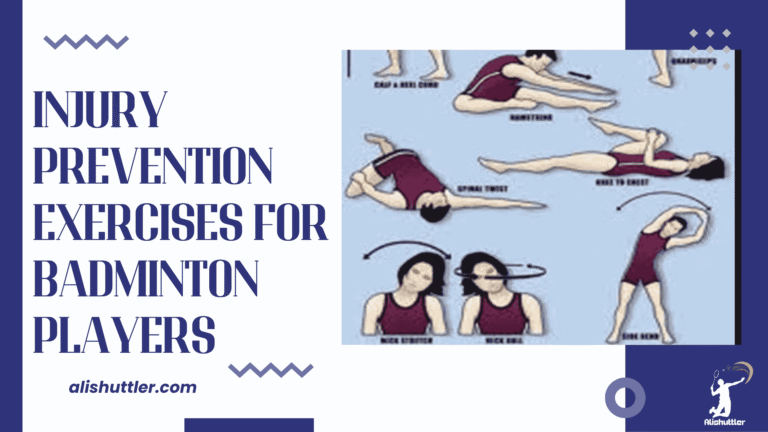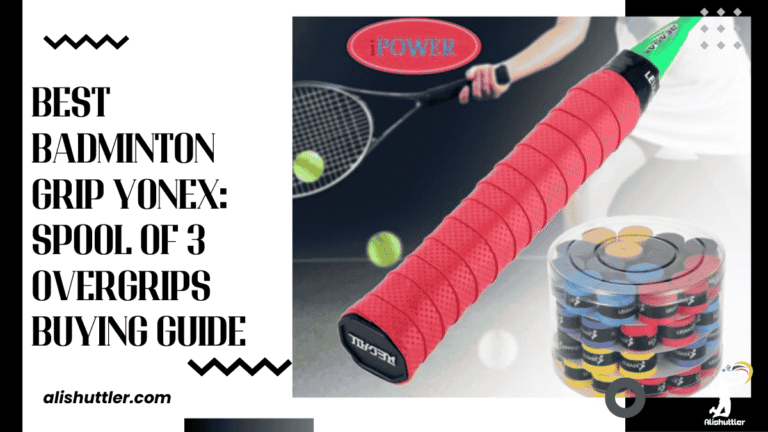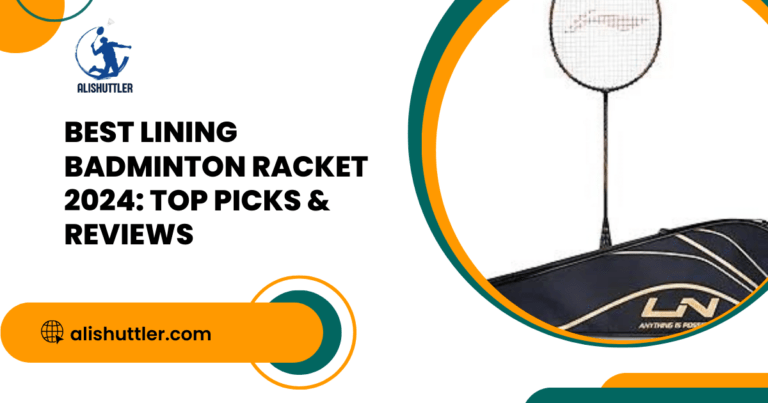A badminton backpack is a speciality sports bag designed to hold your rackets, shoes, shuttles and match gear in a compact, easy-to-wear package.
Most feature a padded racket sleeve, 20–30 L capacity and a front vented shoe pocket to keep the stink in check. Hard-wearing polyester, water-resistant bases and YKK zippers sustain everyday use and travel.

To select smart, balance fit, load layout and weather requirements, then align selections to play styles and commute paths.
Essential Features
A badminton backpack is a great choice for transporting all match essentials and protecting equipment from bumps and extreme temperature changes. The right layout in quality badminton bags eliminates tension, allowing players to concentrate on their game.
- Space for 2–4 rackets, clothes, shoes, towels, and shuttles
- Separate sections for rackets, shoes, and clean clothes
- Durable, water‑resistant fabric with strong zips and seams
- Quick‑access pockets for bottles, snacks, and small parts
- Ventilated shoe area and easy‑clean liners
- Thermal or padded racket sleeve to protect string tension
- Reflective accents for low‑light walks to and from courts
- Designs across types: backpacks, totes, and rectangular racket bags
1. Racket Compartment
Choose a pocket that carries multiple badminton rackets without bent frames. A pin-tight fit prevents heads from chaffing, which keeps paint and grommets intact.
A dedicated, separate racket section helps keep strings from sharp contact with zips or metal items. That reduces the possibility of stress fractures and nicks.
Thermal or padded walls come to the rescue in hot cars or cold halls by buffering rapid temperature changes. A top or side zip that opens wide makes pull-and-play swaps speedy during practice or tournaments.
2. Shoe Compartment
Opt for a backpack with a separate shoe compartment so dust, mud or sweat does not directly contact clothing and towels. Vent holes or mesh panels allow air to flow through, which reduces odor and moisture accumulation after games.
An easy-wipe liner allows you to wipe sand or mud in seconds. Make it big enough for badminton shoes, but give space for more burly footgear if you run or bike to the stadium. A dedicated shoe area keeps pairs organized, so they don’t get mixed in with guards, grips or spare shirts.
3. Main Compartment
Reserve the primary bay for apparel, towels, a light jacket and larger items — such as a foam roller. While a lot of players pack food and drinks, a small insulated pouch or dedicated snack sleeve can be a lifesaver during day‑long events.
Shoot for 20–30 L total volume, with a wide mouth for rapid pack and unpack. Reinforced zippers give you added protection when you’re jamming in some extras after those late-night games.
4. Accessory Pockets
Several mini pockets sort keys, overgrips, string sets and a tube of shuttles. Zippered stash pockets keep wallets and phones secure.
Side stretch pockets accommodate 500–750 ml bottles for quick reach on court changeovers. Reflective trims on these areas aid visibility in dark car parks.
A soft sunglasses pocket or clip for a mini-pump or lock saves little pieces from disappearing.
5. Material & Durability
Opt for rugged but lightweight fabrics, such as high‑denier polyester or coated nylon. They take daily load and rough benches.
Bar‑tacked stress points, smooth coil zips, and a solid top handle. These specifics prevent seams from blowing when the bag is filled.
If you play in rain or shuttle between hot and cold halls, water‑resistant shells and thermal sleeves shield gear from spills and temperature shocks.
Ergonomics & Comfort
Comfort dictates how much of a hike you can endure to the field for practice or a tournament with medium pace. A great choice in badminton backpacks ensures good design that distributes load, mitigates hot spots, and maintains gear stability. Weight and comfort are important because players lug these quality badminton bags for hours — on foot or transit.
Strap Design
Wide, padded shoulder straps reduce pressure on nerves and soft tissue, which comes in handy on long treks. Seek out dense foam that doesn’t compress rapidly and a top grab handle padded for quick lifts.
Adjustable sternum (chest) and waist straps provide extra stability when you pedal or jog to the hall, preventing the pack from swaying. Our swivel strap management system rotates so straps sit directly on different shoulders, enhancing fit for many body types.
Size range counts. With adjustable strap length and ladder locks, one bag fits youth and adults, from smaller frames to broad shoulders. If you share a bag or coach youngsters, this saves time.
Stress points require attention. Verify that there’s box‑stitching or bar‑tacks where the straps come into the body of the pack. Reinforced stitching stays put when you’re hauling that 40 L load with two rackets, shoes, grips and a full bottle.
Lightweight yet strong webbing keeps overall weight low, so the bag safeguards equipment without excess weight.
Back Panel
A breathable, padded back panel relieves pressure on your spine and shoulder blades and keeps sweat to a minimum. Airflow‑mesh lets heat get away, and formed channels provide room for air to flow across your back.
Ergonomic curves should follow the natural S‑curve of your back — a panel that tracks that line makes you stand upright rather than lean forward. Select a panel stiff enough to hold form when the bag is bulked to capacity, thus preventing rackets from jabbing you and the weight from sagging.
Designs have only gotten better with every generation – today’s badminton backpacks utilize lighter frames, smarter foams and cleaner airflow paths than ever before.
Weight Distribution
Even weight on both shoulders is the aim. Try to seek out a design with a lower center of gravity, so mass positions near your mid‑back, not high and away from your body.
Multiple compartments assist you in distributing shoes, shuttle tubes, and bottles left‑to‑right. Internal dividers and a clothing compartment separate clean and dirty kit and prevent sliding.
Pick capacity by need: 10–20 L for light sessions; 25–35 L for daily play; 40 L or more for tournaments. Versatile crossbody bags and portable backpacks provide freedom in how you travel and stow.
Beyond the Basics
This is where design features and material selections in badminton backpacks enhance day-to-day convenience, racket protection, and compatibility with your play and travel requirements.
| Advanced feature | What it does | Why it matters | Seen in |
|---|---|---|---|
| Thermal racket sleeve | Stabilizes string tension | Reduces loss from heat/cold swings | Tour-grade models |
| Molded frame panel | Prevents racket head crush | Adds structure without bulk | Mid/high tiers |
| Ventilated shoe garage | Speeds dry time, isolates odor | Keeps clothes fresher | Most sport lines |
| Waterproof base (TPU/PVC) | Blocks wet courts | Protects spare clothes | All-weather packs |
| Modular pouches | Fast swaps by activity | Cuts search time | Premium organizers |
| Hidden valuables pocket | Discreet storage | Safer in transit | Urban-focused designs |
| External racket carry | Quick access, handle out | Easy grab; some like the look | Commuter styles |
| Compression straps | Stabilize load | Less sway while biking/walking | Travel-friendly |
Thermal Lining
Thermal sleeves protect strings from heat in cars or sun, and from icebox halls. Tension remains nearer to what you strung, so sensation does not change between warm-up and match. If you’re stringing at 10–13kg, even small drops can alter control.
Reserve the linder pocket for rackets only. Wet gear, don’t mix there. Most packs throw in a padded, 2-racket slot holding frames snug, so they don’t knock around in transit.

Insulated sections serve double duty. Slip in a 500 ml drink, cooling spray or a snack pack and they keep cooler for hours. Handy on those looooong days with back-to-back games!
If you trek or play cross-season, thermal bags are bang for your buck. Athletes transitioning from steamy gyms to dry air outside reap the greatest benefit.
Smart Storage
Match-day lists can feature 2–4 rackets, shoes, 2–5 shirts, shorts/leggings, socks, spare grips, scissors, sweat bands, a towel, tape, ankle/elbow guards, birdies and protein snacks.
A 30–45 L configuration with a vented shoe garage, wet/dry divider, and removable pouches tackles this weight without chaos.
Search for modular cubes for grips and strings, and a svelte, hidden pocket for your phone and passport. Other players like an outer racket slot with the handle out – it’s quick to snatch, and yeah, they say it feels a little bit warrior-like.
For light carry, contrast a slim commuter style to a spacious tour bag that beats out a travel backpack and can hold 1–2 months of multi-stop gear.
Modern Materials
High-tech synthetics keep weight low while staying tough: ripstop nylon, Cordura blends, recycled PET, and coated fabrics with TPU or PU for water resistance.
Several of the modern Yonex and Victor tournament lines blend a matte woven face with a coated base, so the bag keeps looking fresh at courts while dropping on damp floors without sopping over.
Coarse-weave panels withstand scuffs from fences and van floors. Smoother panels slip under airline seats. If style matters, seek out muted two-tone shells featuring simple logos.
They read professional in office-to-gym use. If you care about footprint, opt for recycled fibers (usually 50-100% rPET) and PFC-free coatings. Weight can be virtually equivalent, and durability not far behind.
Think sleek 28 L city model for casual slams versus 40+ L tour bag for training blocks. The former loves the daily grind, the latter accommodates players who haul dozens of birdies, multiple grips, stacks of sweat bands, a full-size towel and guard plus cooling spray.
Price Considerations
Pricing fluctuates depending on the construction, manufacturer, and additional features of badminton backpacks and quality badminton bags. Anticipate everything from entry-level to pro-grade equipment.
- Materials and build: Higher-denier fabrics, coated zippers, reinforced seams, and molded backs add cost but extend life.
- Compartments and layout: Extra pockets for shoes, wet gear, and laptops raise price.
- Thermal protection: Foil-lined or insulated racket sleeves cost more, protect string tension in heat.
- Carry comfort: Padded straps, chest straps, and ventilated panels increase price.
- Brand and warranty: Established brands and longer warranties command a premium.
- Capacity and structure: Rigid walls and stable bases add weight and cost.
- Design and finish: Sleek looks or limited runs lift price.
- Promotions: Discounts can shift tiers, makes a €149.95 bag for €127.95 within reach.
Entry-Level
Standard backpacks accommodate a couple rackets, some shuttlecocks, a towel and water bottle. Mats are plain polyester with non-padded dividers. At this tier, a badminton bag can be $33 or you’ll see some at $45 and even $45- $50 when on lite promo.
Anticipate less pockets and no thermal pack. Shoe storage could be a communal pocket. Zippers are par for the course, and straps get a slight padding.
These bags forego smart storage, compression straps and molded backs. That keeps weight down for mass transit or bike rides. Take them as your practice or back up bag. They’re great for the novice who golfs once a week and doesn’t tote wet equipment.
Mid-Range
A mid-range backpack aims for balance: stronger fabric, more pockets, and better comfort at a fair cost. You’ll notice individual shoe tunnels, a padded tablet or 13–15 laptop sleeve and a tidier internal organization for grips, tape and string sets.
Thermal-lined racket sleeves show up in some models. Padding on the back panel and shoulder straps is thicker, and the chest strap assists on longer walks. Top badminton brands have deep lineups here, often with seasonal colors.
Average spend comes in at around $45–$50 in certain markets, with European versions at €49.95 now €39.95, or €99.95 down to €84.95. For the daily grinder hitting the cage 2-3 times a week, this level slashes replacement danger and maintains equipment order with no big price increase.
Premium Tier
Premium tier bags emphasize protection, pro-level organization and finish. Anticipate thermal lining for 2-6 rackets, rigid or semi-rigid walls, ventilated shoe and wet-gear bays, lockable zippers, and high-denier or laminated fabrics.
Carry systems can include load lifters, thicker foam, and breathable back panels. Premium picks from the likes of Yonex, Victor and Li-Ning decorate this zone with travel-ready builds and understated event styling.
Pricing reflects that package: €149.95 reduced to €127.95, a premium €124.95 marked down from €149.95, and top bags often over $150. That value manifests itself in durability, comfort when fully loaded, and consistent protection on planes or blazing stages.
Choosing Yours
Design your load, your stride, and your play frequency by selecting badminton backpacks that match your needs, ensuring gear is secure and accessible for serious players.
- Player level: beginner, serious, or competitive
- Number of rackets: 1–4
- Carry style: two-strap backpack, one-strap shoulder, or wheeled
- Transport mode: walking, public transit, or driving
- Capacity: liters, compartments, and shoe tunnel
- Shape: backpack vs rectangular shoulder bag
- Protection: padded racket sleeves, rigid panels
- Organization: extra straps, multiple pockets, wet/dry sections
- Durability: water‑resistant fabric, zippers, base panel
- Budget: pay for features you will use
| Option | Key features | Price (USD) | Best for | Benefits |
|---|---|---|---|---|
| Compact Backpack (18–22 L) | 1–2 racket sleeve, shoe pocket, 2–3 small pockets | 35–70 | Beginners, commuters | Light, hands‑free, simple |
| Rectangular Shoulder Bag | Slim body, 1–2 racket slot, side pockets | 40–90 | Competitive players who prefer style | Quick access, tidy shape, match‑day fit |
| Tournament Wheeled (35–45 L) | 3–4 racket slots, hard base, trolley handle | 90–160 | Travel, heavy loads | Easy transport, strong protection |
Player Level
We recommend a simple, lightweight backpack with one padded racket sleeve, a shoe section, and a few pockets for grips and a towel – great for beginners. A slim 18–22 L bag holds one or two rackets and basics without bloat.
Serious players will want to seek out multiple racket slots, thicker padding, and wet/dry dividers. A 25–30 L backpack or square model keeps 2-3 rackets, spare strings and apparel in check during those long practice blocks.
For the competitive players, select team or tournament models – such as on match days for their clean look and quick access, preferred rectangular bags. These can hold one or two rackets along with some personal items. If you have four rackets and full kit, then upgrade to a larger backpack or a wheeled bag.
Carry Style
Select by proximity and mass. Backpack straps distribute weight over both shoulders, which is a nice help if you walk or take mass transit and lug around shoes, apparel and accessories.
Others like a one‑strap shoulder carry worn on the side for rapid access when driving to local courts — rectangular shoulder bags work well here and stay tidy in car trunks.
For hard sets—3-4 rackets, balls, shoes, towels and a water bottle—wheeled choices with a telescoping trolley handle ease the burden in check-in stations and long hallways. Check strap padding, sternum clips and grab handles – additional straps help stabilize the load on stairs and buses.
Gear Amount
List what you bring: rackets (1–4), shoes, clothing, grips, string, tape, toiletries, snacks, and a 750 ml bottle. Choose yours size up to fit it all without crush points.
22–30 L carries two rackets and full change. 35–45 L accommodates four rackets with extras.
Utilize shoe and wet kit compartments. Rectangular bags are chic and easy to sling around. Their skinny profile doesn’t allow for excess bulking up of the contents. This is good carry for light wear, not so much for wearing layers.
Proper Maintenance
Proper maintenance makes any badminton backpacks last and keep gear secure. Emphasize CLEAN, dry storage, LIGHT loads, and QUICK checks post-play to avoid frame damage. Little habits slice friction and save dollars down the road.
Comprehensive maintenance checklist
- After each session: air out the bag, wipe the racket frame and strings to clear sweat and dust, and wipe shoes to remove grit. This slows odor, rust on metal parts, and grip breakdown.
- Weekly: empty all pockets, shake out dirt, and clean liners with a damp cloth and mild soap. Allow the bag to dry completely before packing it. Inspect overgrips – change if slick or frayed.
- Monthly: inspect seams, straps, and zipper tracks. Look for loose threads, cracked buckles, or split webbing. Test zipper sliders for smooth run and tooth alignment.
- Seasonal: in humid months, add ventilation, use silica gel or a dehumidifier in the storage area, and rotate damp items out within 12 hours.
Store the bag in a cool, dry place to prevent mold and material degradation
Store the backpack off the floor on a shelf, away from direct sun and heat. Shoot for a steady range of around room temperature (roughly 18–24°C) and low humidity. Don’t leave your rackets in a car trunk during summer or winter.
The heat is known to warp frames and cause glues to loosen in soles, while the cold can make plastics and strings brittle. If storage space is cramped, keep with zippers open to let air flow and stash dirty shoes in a vented pocket.
In rainy seasons, dry everything before putting it away. If you can’t, leave the bag open and toss in a dryer sheet or something to absorb moisture before you close it up overnight.
Inspect zippers, straps, and compartments for wear and repair or replace as needed
Run each zipper from end to end to detect snags. Brush dirt off teeth and drib a teensy drop of zipper lube if necessary. Inspect strap stitching around anchor points.
If you notice fray 5mm or longer, restitch or take to repair shop. Swap cracked buckles prior to cargo breaking them. Inspect racket sleeves for abrasive areas that could scratch grommets.
While you check the bag, scan your gear: clean the racket, check string tension is within the maker’s recommended range and replace overgrips every 2–3 weeks if you play frequently. Worry shuttlecocks with bent feathers. They fly erratic and can strain strings.
Avoid overloading the bag to maintain its shape and extend its lifespan
Stick to the maker’s weight guide if there isn’t one, keep it light enough that you can lift it with one hand without too much effort. Heavy loads stress seams and bend racket sleeves.
Pack heavy items low and near your back. Utilize individual wet/dry pockets so sweat doesn’t saturate fabrics. Carry only what you need: one or two rackets, a tube of shuttles, a towel, a small first-aid kit, and compact tools.

Shoes in vented compartment, clean soles post-play so grit doesn’t abrade liners.
Final Thoughts
A good badminton backpack does serious work. Rugged construction protects equipment. Intelligent pouches save you time. Soft straps save your shoulders. Air flow sweeps sweat. A clean bag lives longer and smells fresher.
Consider your day. Cycle to the court? Slim bag with chest strap stays put. Pack two racquets and shoes? I’m all for split zones and a shoe bin. Play in drizzling rain? Rain cover does. Need to stretch your budget? Mid-price bags tend to strike the sweet spot. Require room for work things? Toss in a laptop slot and a side bottle sleeve.
To make a wise selection, align the bag to your behavior, not to buzz. Then maintain it post-match. Need assistance selecting? Leave us a comment or perchance peruse our brief best buy list.
Frequently Asked Questions
What essential features should a badminton backpack have?
When choosing badminton backpacks, look for a dedicated racket compartment, ventilated shoe pocket, and wet/dry sections. A great choice includes rugged, water-resistant material and double stitching, catering to the needs of serious players.
How do I ensure good ergonomics and comfort?
Opt for badminton backpacks featuring padded, adjustable shoulder straps and a breathable back panel, ensuring a great choice for players. The sternum strap helps distribute weight effectively.
Is a water-resistant backpack necessary?
Yes, water-resistant fabric in badminton backpacks shields rackets, strings, and electronics from light rain and sweat. If you’ll be out and about a lot, look for a pack badminton bag with a rain cover or sealed seams.
What extra features are worth paying for?
Handy upgrades include hard-shell tops for eyewear, RFID-safe pockets, and USB pass-throughs in quality badminton bags. Lockable zippers and reflective elements enhance security and visibility for players during early or late commutes.
How much should I budget for a badminton backpack?
Budget picks are bare bones, while mid-range models offer better padding and materials. Premium badminton backpacks are better built, more organized, and provide specialized compartments for serious players, ensuring durability and ergonomic support.
How do I choose the right size?
Fit capacity to your daily schedule with quality badminton bags. For casual play, around 20 liters is ideal, while training or tournaments may require 25–35 liters for extra shoes, clothes, and accessories.
How do I clean and maintain my badminton backpack?
After play, it’s a great way to care for your badminton backpacks. Air-dry them with zippers open and spot-clean using mild soap and a soft brush. Deodorize with baking soda, and avoid machine washing or harsh chemicals to maintain quality.






